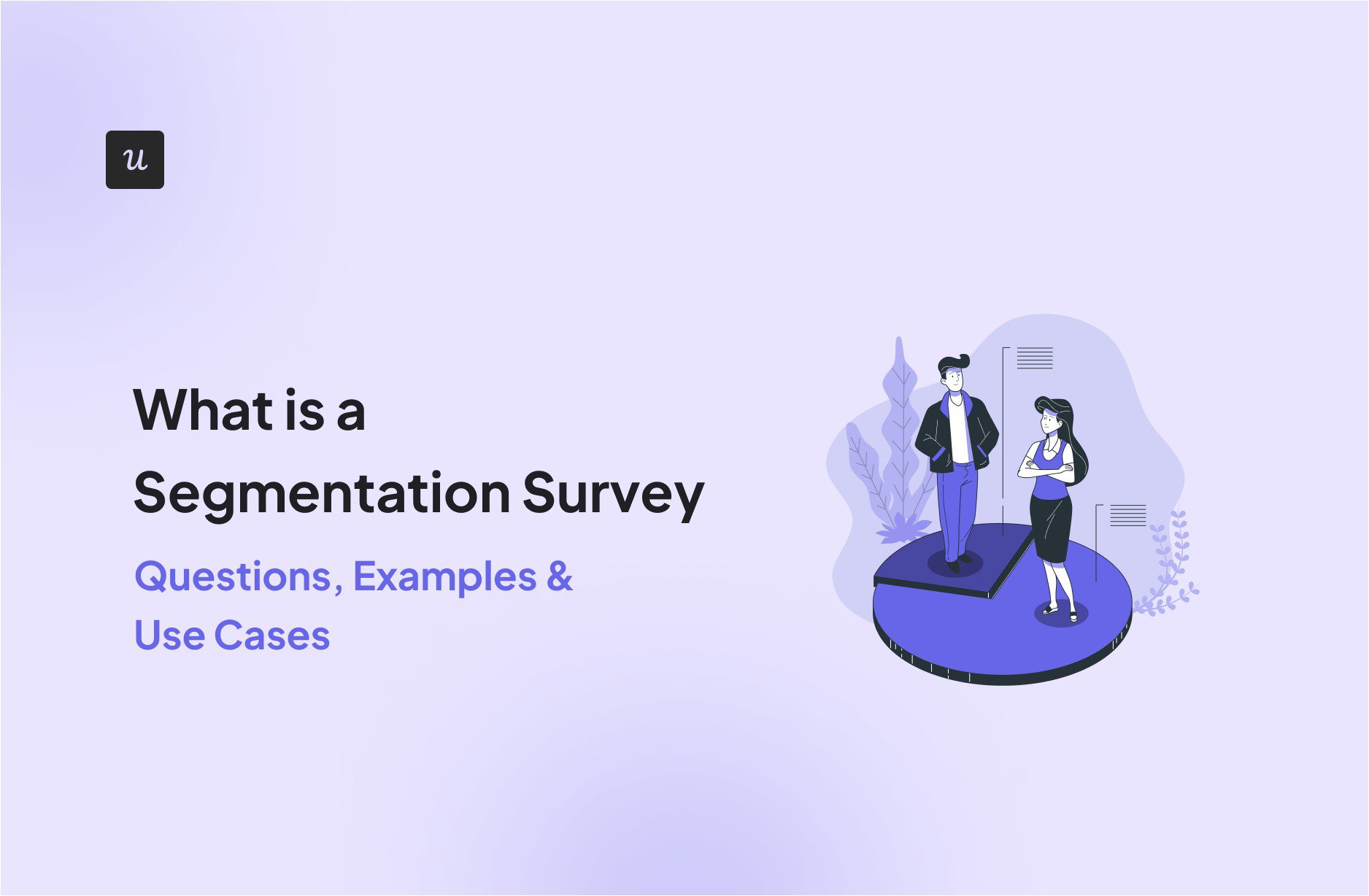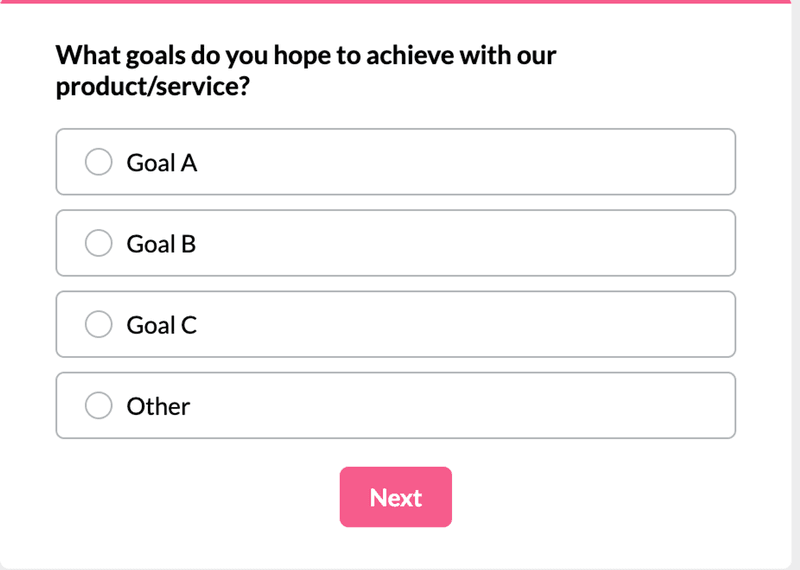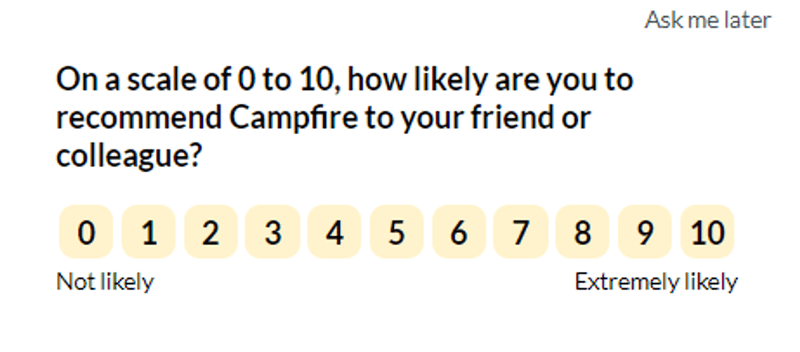
How do you create a segmentation survey? What questions do you use for different use cases? How can you use them for better customer engagement?
These are the main questions the article tackles.
Let’s dive in!
Try Userpilot Now
See Why 1,000+ Teams Choose Userpilot

Summary of a segmentation survey
- Segmentation is a process of grouping customers by shared characteristics. For example, age or product usage patterns.
- A segmentation survey is used to gather the data necessary to segment customers. It also helps teams better understand their existing and prospective customer base.
- A market segmentation survey is a market research tool. It’s used to identify new opportunities and understand the needs of potential customers. In contrast, a customer segmentation survey focuses on existing customers and their characteristics.
- Customer segmentation enables teams to better understand customer needs and pain points and deliver personalized product experiences to accommodate them. This improves satisfaction, retention, and brand loyalty, and improves the performance of marketing strategies.
- Demographic segmentation divides the market based on statistical characteristics of the population such as age or gender.
- Geographic segmentation categorizes customers by their physical location.
- Psychographic segmentation groups individuals according to their lifestyles, interests, and personality traits.
- Behavioral segmentation organizes consumers based on their interactions with products and brands.
- Loyalty segmentation differentiates customers based on their loyalty levels to identify product advocates.
- Usage-based segmentation segments users by the frequency and intensity of product usage.
- Customer lifecycle segmentation separates customers according to their stage in the customer journey.
- Userpilot is a product growth platform with advanced segmentation features. You can segment your customers based on their feedback responses as well as in-app behavior. Book the demo to find out more!
What is segmentation?
Segmentation is a strategy used in marketing, product development, and customer support. It involves dividing your customer base or target audience into groups sharing certain characteristics, such as age, usage patterns, or interests.

What is a segmentation survey?
A segmentation survey is a form used to categorize customers or a market into groups based on shared characteristics.
By asking targeted questions, businesses can identify who their customers are, what they need, and how they interact with products or services.
In SaaS, segmentation surveys provide crucial insights that inform product development, marketing strategies, and customer engagement tactics. This enables more personalized and impactful approaches to meet customer needs.

Customer segmentation vs market segmentation survey
Customer segmentation and market segmentation surveys differ in focus and purpose:
- Focus: The customer segmentation survey targets existing customers to understand their specific characteristics and preferences. The market segmentation survey targets a broader market to understand different groups of potential customers.
- Purpose: Customer segmentation is used to tailor marketing strategies, products, and experiences for existing customers. The goal of market segmentation is to identify new target audiences and market opportunities.
Benefits of customer segmentation
Customer segmentation is crucial for effective engagement throughout a customer’s journey.
Here’s why:
- Deeper insights into customer needs: Segmentation allows companies to understand the nuances in their customer base needs and behaviors.
- Marketing efficiency: Targeting specific segments enables businesses to align their marketing strategy more closely with customer needs and preferences. And avoid unproductive marketing campaigns.
- Product customization: By understanding distinct customer groups, companies can customize their products or features to satisfy unique customer requirements. This increases satisfaction and adoption rates.
- Enhanced customer loyalty: Personalized experiences based on segmentation foster customer loyalty. If you satisfy your customers’ needs and make them feel valued, they will remain loyal to a brand.
- Higher account expansion: With a clear understanding of various customer segments, companies can spot and exploit opportunities for upselling and cross-selling, thereby increasing the lifetime value of customers.
Different use cases of segmentation + example questions in SaaS
How many types of segmentation do you know?
There are actually quite a few, each with their unique use cases. Let’s have a look at a few, along with question examples.
Talking of the questions: for simplicity, they’re all open-ended. It doesn’t mean you should use only this type of question though. In fact, it’s a good idea to start with a closed-ended question, like a multiple choice or Likert scale one, and follow up with optional open-ended ones.
Demographic segmentation
Demographic segmentation categorizes customers based on specific demographic factors such as age, gender, income, occupation, or education level.
This kind of segmentation helps SaaS companies customize their messaging and product development to suit the characteristics of different user groups in their target market. To ensure that marketing efforts are appropriately targeted.
For example, a Fintech SaaS company that offers budgeting software may use demographic segmentation to target younger users, like millennials, with features focused on student loan management. Conversely, it could offer retirement planning features to older age groups.
Demographic segmentation survey questions
- What is your current occupation?
- What industry do you work in?
- How old are you?
- What is your role in your organization?
- What is your highest level of education?
- How many people are employed by your company?
- What is your gender?
- What is your annual income range?
- How many people live in your household?
- What is your marital status?
Geographic segmentation
Geographic segmentation involves grouping customers based on their physical location—this could be as broad as country or continent, or as specific as city or neighborhood.
Understanding geographic variables allows SaaS businesses to tailor their products and marketing strategies according to local preferences, regulatory conditions, and market maturity. These can vary significantly across different regions.
For instance, a SaaS provider of e-commerce platforms might customize its offerings by integrating specific payment gateways popular in certain regions, like PayPal in the US or Alipay in China, to improve user experience and increase sales.
Geographic segmentation survey questions
- In which country do you currently live?
- What city or region do you live in?
- Is your location urban, suburban, or rural?
- What is your time zone?
- Do you use our product differently during certain seasons or weather conditions?
- How does your location influence your technology and software choices?
- Are there local competitors affecting your choice of our product?
- Does your location restrict access to technology?
Psychographic segmentation
Psychographic segmentation focuses on the psychological aspects of consumer behavior, including personality traits, values, interests, lifestyle choices, and attitudes.
This kind of segmentation allows SaaS companies to connect with users on a deeper level. By crafting marketing messages and product features that resonate with their inner motivations and desires.
Let’s take a project management tool as an example. After identifying a segment that highly values efficiency and time management, it can target customers with features like automated task prioritization and integrations with time-tracking software.
Psychographic segmentation survey questions
- What motivated you to choose our software?
- What are your main goals in using our product?
- Describe your values in relation to your work.
- What are your hobbies and interests outside of work?
- How do you prefer to interact with technology?
- What is your attitude towards innovation and new technologies?
- What frustrates you about the software solutions you currently use?
- How do you generally respond to technological changes within your industry?
- What lifestyle changes are you hoping our product will support?
Behavioral segmentation
Behavioral segmentation divides users based on their behavior patterns with the software, such as usage frequency, feature preferences, user status, or engagement levels.
This segmentation helps you understand how different users interact with your product. This can inform user experience improvements, personalized in-app experiences, or retention strategies.
For example, you could target users engaging with particular features with in-app messages offering guidance on how to best leverage them to achieve their objectives.
Behavioral segmentation survey questions
- How often do you use our product?
- What features do you use most frequently?
- Have you participated in any of our training sessions or webinars?
- How do you normally learn about new features or updates?
- What tasks do you complete using our software?
- Which of our product’s features could you not work without?
- What is your preferred method of support (chat, email, phone)?
- How do you integrate our product into your daily workflow?
Loyalty segmentation
Loyalty segmentation assesses the degree of customer loyalty using factors like NPS, satisfaction score, or how long they’ve been using the product.
Identifying varying levels of loyalty among users helps teams design specific programs or outreach initiatives to increase it.
For example, you can reward high-value users with exclusive offers and use them to drive product growth via WOM. Or focus retention efforts on dissatisfied users.
For example, you could use the survey to identify your most loyal users based on subscription renewals and high engagement rates and invite them to beta-test new features.
Loyalty segmentation survey questions
- How long have you been using our product?
- On a scale of 1-7, how satisfied are you with our product? (CSAT survey)
- Would you consider renewing your subscription?
- Have you considered switching to a competitor? If so, why?
- What improvements would encourage you to continue using our product?
- On a scale of 1-10, how likely are you to recommend our product to others? (NPS survey)
- What has been your most memorable interaction with our company?

Usage-based segmentation
Usage-based segmentation categorizes customers based on how much they use the product, which features they use most, and how they use these features.
Understanding different usage patterns can help SaaS companies identify which features need more development or highlight potential upsell opportunities for high-usage customers. It can also be useful to identify users who need a nudge to adopt features relevant to their use cases.
For instance, an analytics platform might find that some users don’t use predictive analytics enough even though their goal is churn prevention. And then target them with in-app messages to drive their adoption.
Usage-based segmentation survey questions
- Which features do you use (daily/weekly/monthly)?
- How many users from your team access our product (daily/weekly/monthly)?
- Have you increased your usage of our product over time?
- Do you use our product more during specific times of the year or month?
- How does your usage compare to last year?
- What tasks has our product simplified for you?
- Do you use integrations with our product? Which ones?
Customer lifecycle segmentation
Customer lifecycle segmentation involves dividing customers based on their stage in the customer journey, from the moment they learn about the product until they become loyal customers. Or churn.
This segmentation allows for targeted marketing strategies that are appropriate to each stage of the lifecycle. From onboarding flows designed to activate new users to re-engagement campaigns aimed at bringing back inactive ones.
For example, you could segment users into new sign-ups and active users. You could then trigger for them different onboarding patterns. Primary for the new ones to activate core features, and secondary for the active ones to help them discover more advanced functionality.
Customer lifecycle segmentation survey questions
- How long have you been a customer of our company?
- What are the main challenges you’ve faced using our product?
- Have your needs changed since you first started using our product?
- What additional support do you require at this stage?
- Are there any features you no longer use?
- How has your usage of our product evolved over time?
- What information would have helped you better at the start of your subscription?
- What can we do to enhance your experience at the moment?
How to create a segmentation survey?
With the theory covered, let’s create a segmentation survey. Step-by-step.
- Define your objectives: decide what you want to achieve with your segmentation. Are you looking to improve product KPI, tailor marketing messages, or identify new market opportunities?
- Identify segmentation criteria: decide how you will segment your audience. For example, if you’re looking at improving feature adoption, usage-based segmentation is the choice.
- Develop survey questions: Craft questions to gather the data needed for your segmentation criteria. If stuck, use a question pool or an AI writing assistant for inspiration.
- Choose the right survey tool: Select a survey platform that allows you to design, distribute, and analyze surveys. For example, in Userpilot, you can easily create your survey from a template and send it to your customers in-app. Or leverage the Hubspot integration and deliver them via email.
- Test the survey: Before full deployment, pilot-test your survey with a small segment of your target audience.
- Launch it: send the survey to your chosen sample. Monitor the response rate to ensure you gather enough data for reliable analysis.
- Analyze the data: Use statistical software or built-in tools in your survey platform to analyze the survey data. Look for patterns and trends that help you define distinct segments.
- Report and act on findings: Compile the insights into a report that clearly describes each segment and its characteristics. Use these findings to inform business strategies, marketing campaigns, and product initiatives.
- Iterate and refine: Segmentation is not a one-time process. Periodically revisit your segmentation strategy and update your survey to reflect shifts in the market or in your business goals.
Conclusion
A segmentation survey is a valuable research tool for product, marketing, and customer success teams. It allows you to group your users for targeted engagement and gather insights that might not be accessible through product analytics.
If you’d like to learn more about Userpilot and how to use it to segment users and engage them in-app, book the demo!








